Empresses and Extravagance: The Story of Catherine Palace

Introduction
Catherine Palace, located in the town of Tsarskoye Selo (now Pushkin) near St. Petersburg, stands as a resplendent symbol of imperial Russia’s opulence and architectural grandeur. Known for its stunning Baroque design, lavish interiors, and rich history, Catherine Palace is one of Russia’s most iconic landmarks. Its origins trace back to the early 18th century, and over the years, it has been a residence of several Russian empresses who left their mark on its development and splendor.
Named after Catherine I, the second wife of Peter the Great, the palace was originally a modest summer residence. However, it was under the reign of Empress Elizabeth, Peter the Great’s daughter, that the palace underwent a remarkable transformation, becoming a grandiose example of Baroque architecture. Renowned architect Bartolomeo Rastrelli was commissioned to redesign the palace, resulting in the breathtaking structure that stands today.
This article delves into the rich history and architectural brilliance of Catherine Palace, examining its founding, the contributions of key figures, its cultural impact, and the extensive efforts to preserve its legacy. We will explore the magnificence of its interiors, the cultural and historical significance it holds, and the experience awaiting visitors to this masterpiece of Russian heritage.
The Founding and Early History
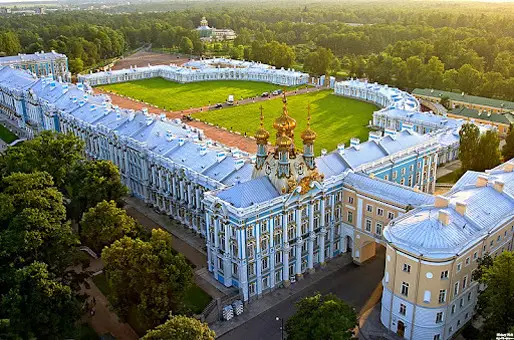
Catherine Palace’s story begins with Empress Catherine I, who commissioned the construction of a modest summer residence in 1717. Initially a simple two-story building designed by German architect Johann-Friedrich Braunstein, the palace served as a retreat for the empress. However, the modesty of the original structure did not reflect the grandeur that subsequent rulers envisioned for their imperial residence.
The transformation of Catherine Palace into a symbol of imperial extravagance began under Empress Elizabeth, the daughter of Peter the Great. Elizabeth, known for her love of luxury and opulence, commissioned Bartolomeo Rastrelli, the leading architect of her time, to redesign and expand the palace. Between 1743 and 1756, Rastrelli created a magnificent Baroque structure, characterized by its elaborate façade, gilded ornaments, and expansive dimensions.
Empress Elizabeth’s vision for the palace was one of unparalleled grandeur. She spared no expense in its construction, resulting in a residence that epitomized the Baroque style’s flamboyance and elegance. The palace’s stunning blue-and-white exterior, adorned with gold leaf, and its opulent interiors set a new standard for imperial residences in Russia. Elizabeth’s contributions established Catherine Palace as a centerpiece of Russian architectural and cultural heritage.
Architectural Brilliance
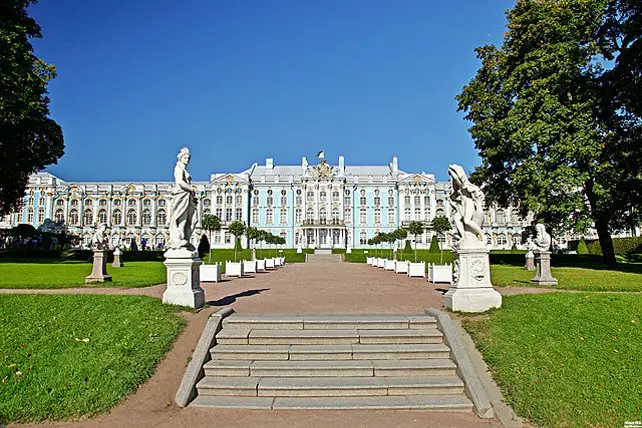
Catherine Palace is renowned for its architectural brilliance, showcasing the pinnacle of Baroque design. Bartolomeo Rastrelli’s vision brought to life a structure that is both grand in scale and intricate in detail. The palace’s exterior, with its harmonious blend of blue, white, and gold, creates a striking visual impact. The elaborate stucco work, gilded sculptures, and ornamental decorations exemplify the Baroque style’s emphasis on drama and opulence.
One of the palace’s most famous features is the Amber Room, often referred to as the “Eighth Wonder of the World.” Originally constructed in the early 18th century for the Prussian king Frederick I, the room was presented to Peter the Great as a gift. Under Elizabeth’s reign, the room was installed in Catherine Palace, where it was expanded and enhanced by Italian craftsmen. The Amber Room, with its walls covered in amber panels, gold leaf, and mirrors, became a symbol of the palace’s extravagance. Tragically, the original Amber Room was looted during World War II, but it has since been meticulously reconstructed, allowing visitors to experience its breathtaking beauty.
The Great Hall, another architectural marvel, exemplifies the grandeur of Catherine Palace. Also known as the Hall of Light, this vast space is adorned with gilded carvings, crystal chandeliers, and floor-to-ceiling mirrors that create an illusion of endless space. The hall was used for grand balls, receptions, and state ceremonies, reflecting the opulent lifestyle of the Russian imperial court. The intricate parquet floors, ornate ceilings, and richly decorated walls showcase the artisanship and attention to detail that define the palace’s interiors.
Cultural Impact and Legacy
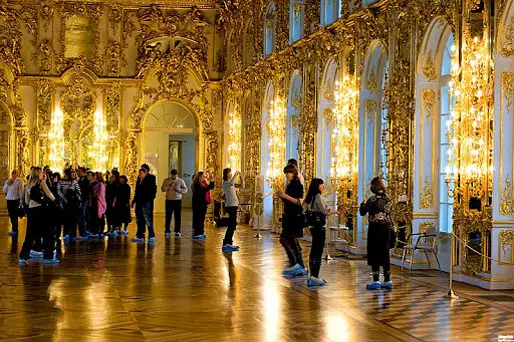
Catherine Palace has played a significant role in Russian culture and society, serving as both a symbol of imperial power and a center of artistic and cultural activity. The palace was not just a royal residence but also a place where important cultural events and gatherings took place. It hosted lavish balls, concerts, and theatrical performances, attracting the finest artists, musicians, and intellectuals of the time. The palace’s opulent surroundings provided an inspiring backdrop for creativity and cultural exchange.
The influence of Catherine Palace extends beyond its physical beauty. It has been a source of inspiration for Russian art, literature, and music. The grandeur and elegance of the palace have been depicted in countless works of art and literature, capturing the imagination of artists and writers. The palace’s significance in Russian history and culture is also reflected in its depiction in films and television series, which bring to life the opulent lifestyle of the Russian imperial court.
Historical events and notable figures associated with Catherine Palace further underscore its cultural impact. Empress Catherine II, known as Catherine the Great, made significant contributions to the palace and its surrounding parklands. Her reign marked a period of cultural flourishing, and the palace became a center for intellectual and artistic pursuits. The Enlightenment ideas that Catherine the Great embraced were reflected in the architectural and cultural developments at Catherine Palace, making it a symbol of progress and innovation.
Conservation and Modern Use
Preserving the historical integrity of Catherine Palace has been a complex and ongoing challenge. The palace has faced numerous threats over the centuries, including wars, fires, and natural deterioration. However, extensive restoration efforts have ensured that this architectural and historical gem remains intact for future generations to appreciate. The restoration process has been guided by meticulous research and a commitment to preserving the palace’s historical authenticity.
One of the most significant restoration efforts took place after World War II. During the war, the palace suffered extensive damage, and many of its treasures, including the Amber Room, were looted. The post-war restoration involved painstaking work to reconstruct and restore the palace to its former glory. This included the ambitious project to recreate the Amber Room, which was completed in 2003 and stands as a testament to the dedication and skill of the restorers.
Today, Catherine Palace serves multiple purposes, blending its historical legacy with modern functionality. It is a major tourist attraction, welcoming visitors from around the world who come to marvel at its architectural splendor and historical significance. The palace complex also hosts cultural events, exhibitions, and concerts, continuing its tradition as a center for artistic and cultural activities. Modern adaptations, such as the installation of visitor amenities and facilities, ensure that the palace remains accessible and enjoyable for contemporary audiences.
Exploring Catherine Palace
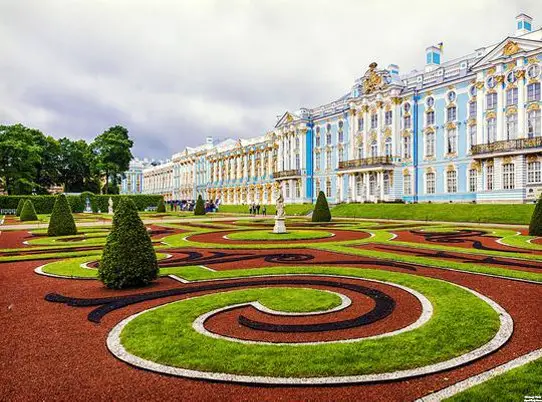
Visiting Catherine Palace is an enriching experience that offers a glimpse into the grandeur of imperial Russia. The palace complex is open to the public, and visitors can explore its many attractions, including the opulent state rooms, beautifully landscaped gardens, and fascinating museums. Guided tours are available in multiple languages, providing valuable insights into the history and significance of the various sites within the palace complex.
One of the highlights of any visit to Catherine Palace is the Amber Room. Visitors can admire the meticulous reconstruction of this legendary room, with its dazzling amber panels, gold leaf, and mirrors. The room’s beauty and craftsmanship are truly awe-inspiring, offering a unique opportunity to experience one of the most famous rooms in the world. Another must-see is the Great Hall, where visitors can marvel at the grandeur of the space and imagine the lavish balls and state ceremonies that once took place there.
The palace’s extensive gardens and parklands provide a peaceful retreat and stunning views. Designed by prominent landscape architects, the gardens feature elegant pavilions, statues, and water features that reflect the tastes and styles of different periods. The Catherine Park, with its picturesque lakes and carefully manicured lawns, offers a perfect setting for leisurely strolls and relaxation. Seasonal highlights, such as the blooming of the garden’s flowers in spring and summer, add to the charm of the visit.
Conclusion
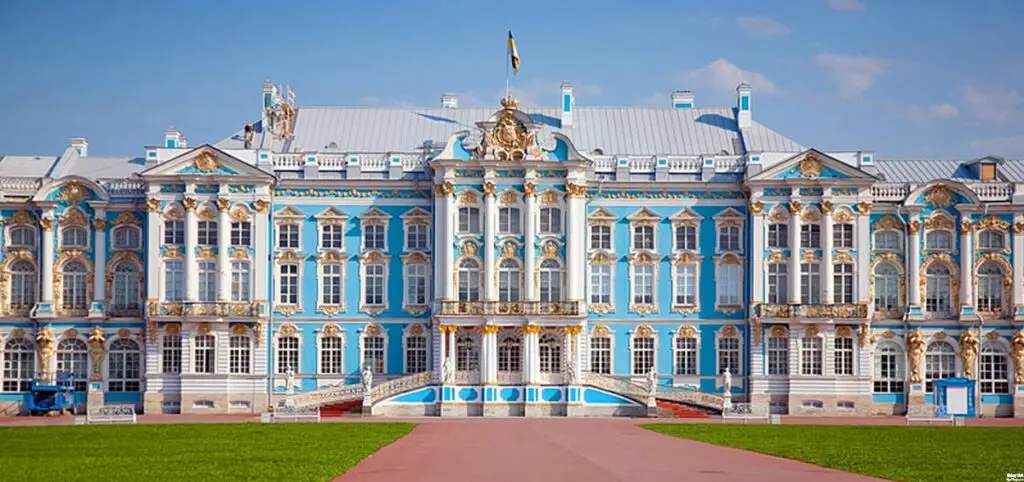
Catherine Palace stands as a remarkable testament to Russia’s rich historical, cultural, and architectural heritage. Its founding by Empress Catherine I, transformation under Empress Elizabeth, and subsequent contributions by Catherine the Great have made it a symbol of imperial power and artistic excellence. The palace’s Baroque architecture, exemplified by the Amber Room and the Great Hall, continues to captivate visitors with its opulence and beauty.
As we have explored in this article, Catherine Palace’s historical significance, architectural brilliance, cultural impact, and conservation efforts all contribute to its enduring legacy. The ongoing preservation and modern adaptations ensure that this UNESCO World Heritage site remains a vibrant and accessible part of Russia’s cultural landscape. The palace’s ability to blend its historical legacy with contemporary functionality highlights its importance as a living monument.
For those fortunate enough to visit, Catherine Palace offers a profound and immersive experience that allows them to connect with the rich history and cultural traditions of Russia. It is a place where history and art converge, creating a timeless monument that continues to captivate the hearts and minds of all who encounter it. Catherine Palace remains a beacon of cultural heritage, a symbol of the artistic and architectural genius of its creators, and a testament to the enduring power of beauty and history.


